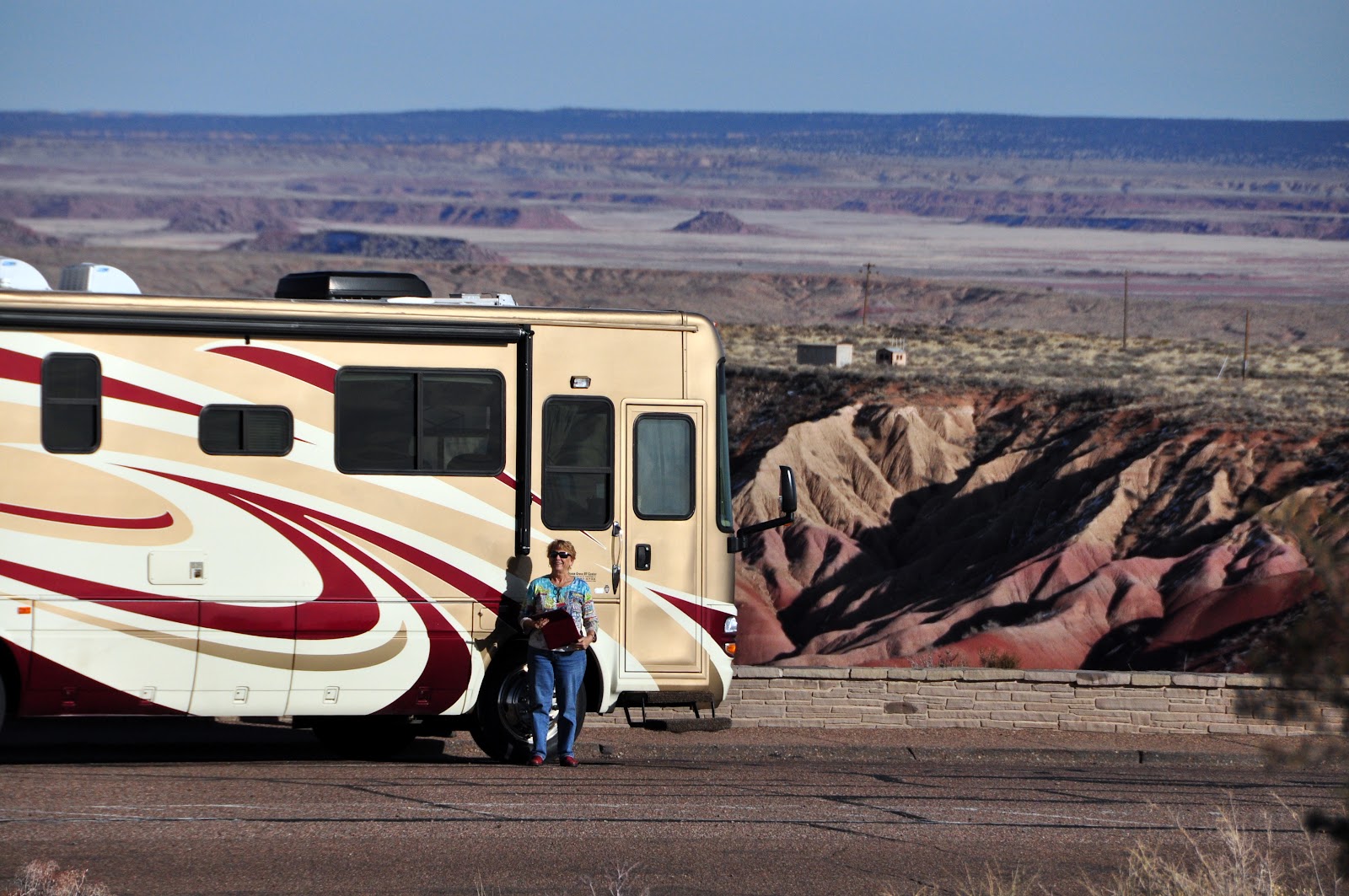Saturday, February 2
Finally, we're on the way!
This morning, we have a lot of loose ends to finish up. A trip to the Base Exchange and Commissary and getting some things to finish up the tow system and we finally head West.
We can't drive over 65 mph because of limitations on towing speed for the CRV. But it's a nice drive toward Arizona.
 |
| Jan enjoys the recliner |
 |
| The Main Driver |
Our first destination is the Petrified Forest National Park and Painted Desert, about a 4-5 hour drive from Albuquerque (which is about all we want to drive in a day).
We had visited this last year and really enjoyed it. It is definitely worth another visit.
We arrive around 3 PM and decide we can't really enjoy all that the park has to offer in 2 hours, so decide we'll stay in a campground about 15 miles West in Holbrook, Az and come back tomorrow. Today, we ride a short distance in the Painted Desert and enjoy a beautiful afternoon.
 |
| Clara taking a picture of Bill and Jan |
 |
| There's a reason it's called the Painted Desert |
 |
| The two ladies!! |
Then head further West to OK RV Park on Historic Route 66. We'll leave the motorhome at the RV park tomorrow and take the TOAD back to the park.
We are finally on the way! Right now our destination is Tucson. Maybe we'll make it sometime in the next week or so. We still have hopes to make it to the Grand Canyon.
Sunday, Feb 3
This morning we woke to overcast skies at OK RV Park in Holbrook, Az after a peaceful, quiet night. We unhooked the CRV and headed toward the South entrance to the Petrified Forest National Park.
After an interesting stop at one of the several places that sell Petrified Wood (which is collected from areas outside the National Park) and purchasing a nice sandstone rock for the Mountain House, we headed into the Park. The sandstone rock was formed as layers of dirt and silt were deposited and have many beautiful formations. The one we choose looks like mountain layers.
We took a very slow drive to the North entrance (where we had been the day before). We tried to stop at just about every overlook and point of interest.
 |
| Petrified wood log |
 |
| This log was buried under sometimes hundreds of feet of silt in river beds 225 million years ago. As the continent was formed, these river beds were raised to their current levels 5,000 feet above sea level. Today, erosion is slowly uncovering these logs. |
 |
| The erosive forces of nature are clearly visible. |
For Anna and Evan:
The Petrified National Forest is a high, dry grassland that was once a vast floodplain crossed by many streams. Tall, stately conifer trees grew along the banks. Crocodile-like reptiles , giant amphibians, and small dinosaurs lived among a variety of ferns, cycads and other plants and animals known only as fossils today.
The trees fell and swollen streams washed them into adjacent floodplains. A mix of silt, mud and volcanic ash buried the logs. This sediment cut off oxygen and slowed the logs decay. Silica-laden groundwater seeped through the logs and replaced the original wood tissues with silica deposits. Eventually the silica crystallized into quartz and the logs were preserved as petrified wood.
Over the 225 million years since the trees lived, the continents moved to their present positions, and this region was uplifted. As a result the climate changed, and the tropical environment became today's grassland.
Over time, wind and water wore away the rock layers and exposed fossilized ancient plants and animals. The hills will yield more fossils as weather sculpts the Painted Desert's soft sedimentary rock.
In the mid-1880's U. S Government mappers and surveyors exploring this area carried stories back East of the remarkable "Painted Desert and its tress turned to stone".
In 1906 President Theodore Roosevelt set aside selected stands of the petrified trees and the Petrified Forest National Monument.. In 1962 Congress designated the monument as a National Park.




















































